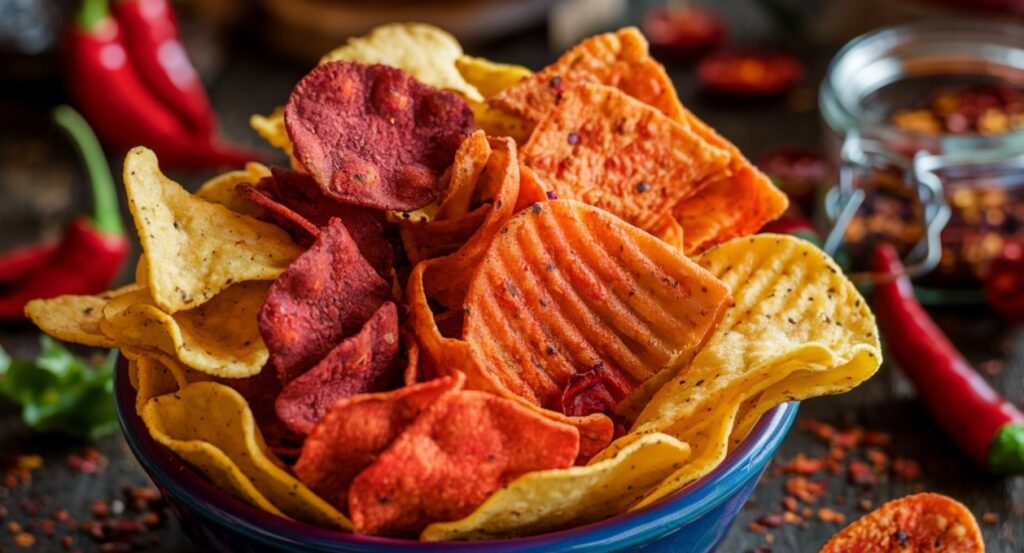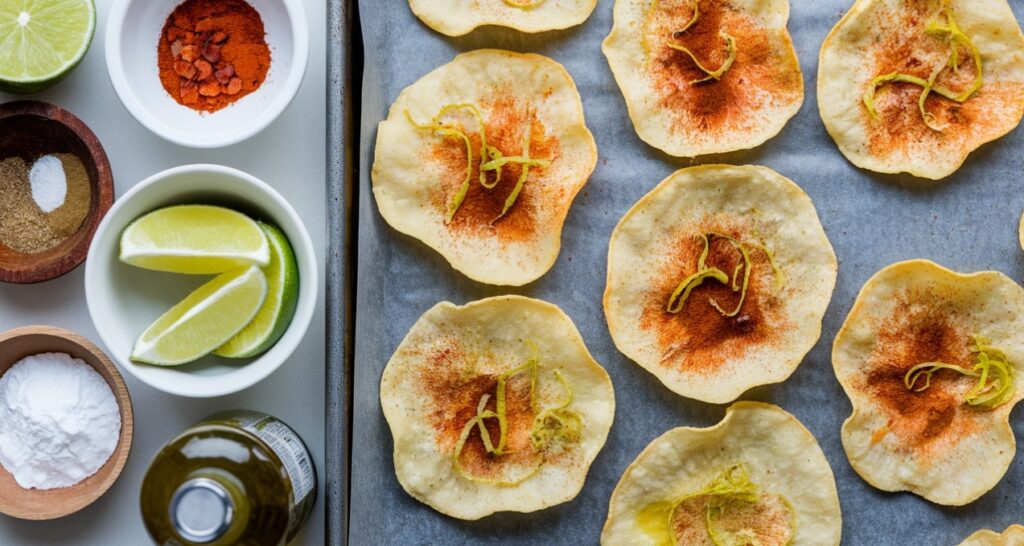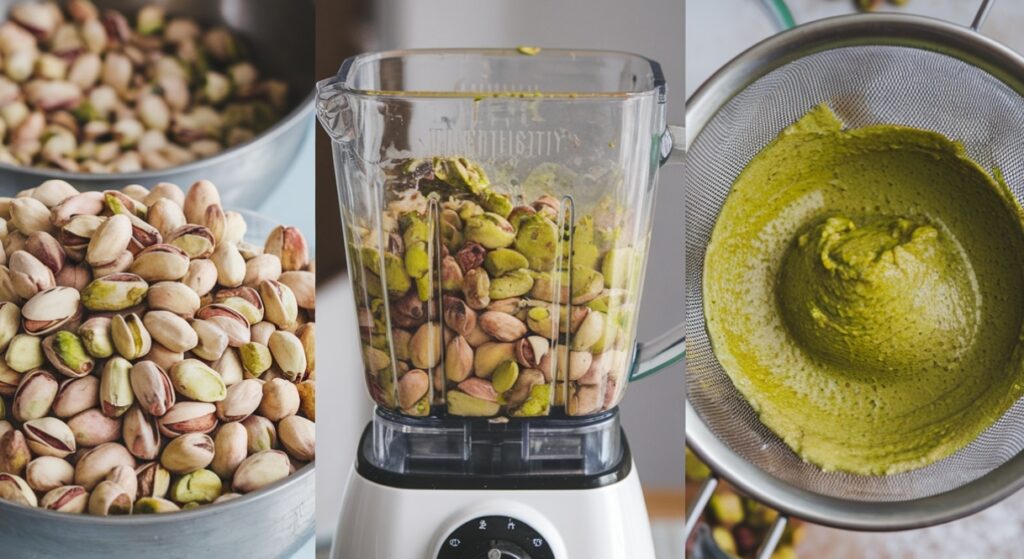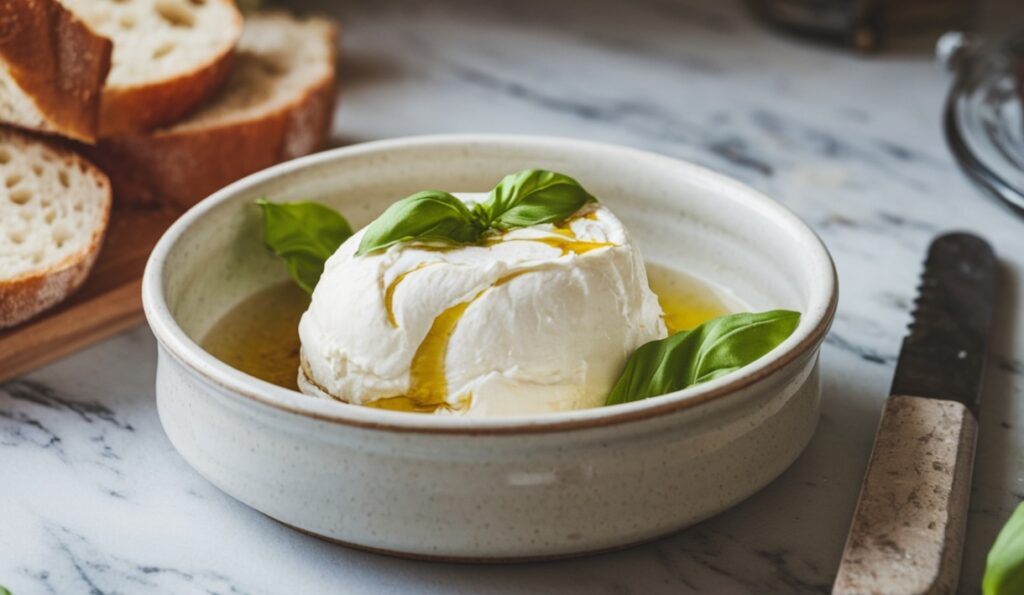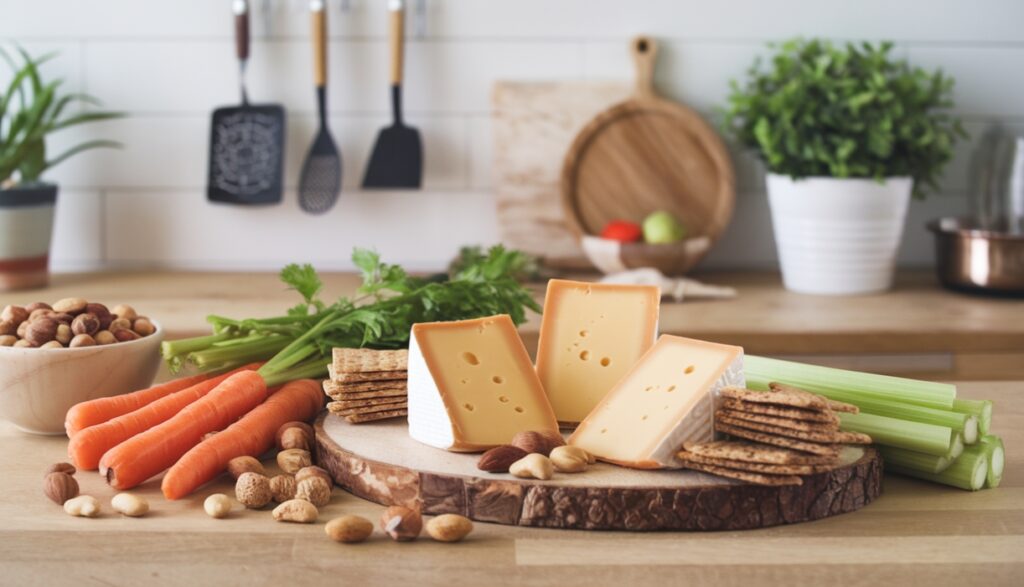Pistachio butter might not be as well-known as peanut butter or almond butter, but it is steadily gaining attention for its unique taste and impressive health benefits. With its creamy texture, rich flavor, and nutrient-packed profile, pistachio butter can be a fantastic addition to a balanced diet. But is it as healthy as it seems? Let’s break it down and explore everything you need to know about pistachio butter’s nutrition and benefits.
Introduction to Pistachio Butter
Pistachio butter is made by blending roasted or raw pistachio nuts into a smooth, spreadable paste. Unlike some other nut butters, pistachio butter has a natural, slightly sweet flavor and a gorgeous green hue that makes it stand out.
While pistachios themselves have been enjoyed for centuries, their spreadable version is relatively new and quickly gaining popularity among health enthusiasts, foodies, and those looking for plant-based protein options.
What makes pistachio butter unique is its balance of healthy fats, protein, and essential nutrients, all packed into a tasty spread. However, not all pistachio butter is created equal—its healthfulness depends on the quality of the ingredients and how it’s prepared.
If you enjoy nutrient-dense spreads, you might also like this guide to pistachio cream, which shares similar benefits but with a dessert twist.
Nutritional Profile of Pistachio Butter
To understand just how healthy pistachio butter is, let’s look at its nutritional content. A typical serving of pistachio butter (around 2 tablespoons, or 32 grams) provides a good mix of macronutrients, vitamins, and minerals.
Calories and Macronutrients
Pistachio butter is nutrient-dense, meaning it delivers a lot of energy and nutrients in a small serving. Here’s a general breakdown of what you can expect in 2 tablespoons of pistachio butter:
- Calories: ~180-200 kcal
- Protein: ~6 grams
- Fats: ~16 grams (majority monounsaturated and polyunsaturated fats)
- Carbohydrates: ~8 grams
- Fiber: ~3 grams
This makes pistachio butter a well-rounded food that offers healthy fats, protein, and fiber while being lower in carbs compared to other spreads.
Block Quote: “Pistachio butter delivers a perfect combination of heart-healthy fats, plant-based protein, and essential nutrients in every serving.”
Vitamins and Minerals in Pistachio Butter
Pistachios, and by extension pistachio butter, are loaded with key micronutrients. You might also want to explore this recipe for a pistachio spread for another way to enjoy this versatile nut.
- Vitamin B6: Supports brain health, energy production, and hormone regulation.
- Magnesium: Important for muscle function, bone health, and relaxation.
- Potassium: Helps regulate blood pressure and supports heart function.
- Iron: Essential for red blood cell production and oxygen transport.
- Vitamin E: Acts as an antioxidant to protect cells from oxidative stress.
The nutrient-dense profile of pistachio butter makes it a powerhouse food, particularly for boosting energy and supporting overall health.
Health Benefits of Pistachio Butter
Pistachio butter is more than just a tasty spread—it offers a range of health benefits when consumed in moderation. Here are some of the top benefits:

Promotes Heart Health
Pistachio butter is rich in heart-healthy fats, which help reduce bad cholesterol (LDL) and increase good cholesterol (HDL). If you’re looking to boost your cardiovascular health with more nutritious choices, explore this post on healthy dairy foods.
Additionally, pistachios contain compounds like phytosterols that support heart function by preventing cholesterol absorption in the intestines.
Block Quote: “Including pistachio butter in your diet can be a delicious way to support a healthy heart, thanks to its good fats and essential nutrients.”
Supports Weight Management
Despite being calorie-dense, pistachio butter can actually aid in weight management when eaten in moderation. How? The combination of protein, fiber, and healthy fats in pistachio butter keeps you feeling fuller for longer, reducing the likelihood of overeating.
Pistachio butter also has a lower calorie count than many other nut butters, like peanut butter, making it a smart choice for those watching their calorie intake.
Provides Antioxidant Benefits
Pistachio butter is a powerhouse when it comes to antioxidants. These compounds help fight off free radicals, which can damage cells and accelerate aging. Pistachios are particularly rich in lutein and zeaxanthin, two powerful antioxidants that support eye health and protect against conditions like macular degeneration.
Additionally, the presence of Vitamin E in pistachio butter enhances its antioxidant capabilities, helping your body fight oxidative stress and inflammation. Including this nut butter in your diet can keep your cells happy and healthy while boosting your overall well-being. For more dessert ideas that incorporate this nutrient-dense nut, try this creamy and indulgent pistachio cheesecake.
Enhances Digestive Health
Pistachio butter is a good source of dietary fiber, which is essential for digestive health. Fiber helps regulate bowel movements, preventing constipation and promoting a healthier gut microbiome.
The fiber in pistachio butter also acts as food for beneficial gut bacteria, encouraging the growth of probiotics. These good bacteria are essential for optimal digestion, nutrient absorption, and even immune function.
So, adding a spoonful of pistachio butter to your diet can support a smooth-running digestive system and help you feel your best.
Common Concerns and Drawbacks
While pistachio butter is nutritious, it’s calorie-dense, so it’s essential to practice portion control. Additionally, avoid options with added sugars or oils.
For other healthy spread ideas, check out this simple recipe for pistachio cream.
High-Calorie Content
Like all nut butters, pistachio butter is calorie-dense. While the fats and nutrients are healthy, consuming too much can lead to unwanted weight gain, especially if you’re not careful with portion control.
For context, 2 tablespoons of pistachio butter can contain around 180-200 calories. To enjoy it guilt-free, stick to reasonable serving sizes and incorporate it into a balanced diet.
Added Sugars and Oils
Not all pistachio butter is created equal. Some brands add refined sugar, palm oil, or artificial additives to enhance flavor and texture. These additions can significantly reduce the health benefits of pistachio butter.
When shopping for pistachio butter, look for options with minimal ingredients—ideally just pistachios and maybe a pinch of salt. Avoid products with added sweeteners or hydrogenated oils to keep your spread as healthy as possible.
Pro Tip: Always check the ingredient list! The shorter and simpler it is, the better the quality of your pistachio butter.
Allergic Reactions
Pistachio butter, like other nut butters, can cause allergic reactions in some individuals. If you or someone in your household has a nut allergy, it’s essential to avoid pistachio butter entirely.
Symptoms of a pistachio allergy can range from mild (itchy throat or hives) to severe (difficulty breathing or anaphylaxis). Always be cautious and consult with a healthcare provider if you suspect an allergy.
How to Choose the Healthiest Pistachio Butter
With so many pistachio butter options on the market, it can be tricky to find one that’s truly healthy. Here are some tips to help you pick the best pistachio butter:
Check the Ingredients List
The first step to choosing a healthy pistachio butter is reading the ingredients label. Ideally, the only ingredient should be pistachios. A small amount of salt is acceptable, but avoid butters with added sugars, oils, or preservatives.
Good Example:
- Ingredients: Pistachios
Bad Example:
- Ingredients: Pistachios, sugar, palm oil, artificial flavoring
Look for Natural and Unsweetened Options
Many commercial nut butters include hidden sugars to make them taste sweeter. While these may be more appealing, they’re far less healthy. Opt for unsweetened, natural pistachio butter to enjoy the full nutritional benefits without unnecessary additives.
If you’re unsure, look for phrases like:
- “No added sugar”
- “100% natural”
- “No artificial ingredients”
Pro Tip: If you can’t find a store-bought version that meets your standards, try making homemade pistachio butter! All you need is roasted pistachios and a blender. It’s fresh, simple, and free of additives.
How to Incorporate Pistachio Butter into Your Diet
Pistachio butter isn’t just a tasty treat—it’s also a versatile addition to your meals. Here are some creative and practical ways to include pistachio butter in your daily diet:

As a Spread or Topping
One of the simplest ways to enjoy pistachio butter is to use it as a spread or topping. Its creamy texture and slightly sweet flavor make it perfect for:
- Toast or Bagels: Swap out regular peanut butter for pistachio butter to give your breakfast a unique twist. Add some sliced bananas, strawberries, or a drizzle of honey for extra flavor.
- Pancakes and Waffles: Spread a layer of pistachio butter on pancakes or waffles instead of syrup for a protein-packed, satisfying meal.
- Rice Cakes or Crackers: Top rice cakes or whole-grain crackers with pistachio butter and a sprinkle of chia seeds for a healthy snack.
Pro Tip: Pair pistachio butter with whole-grain bread or fruit to balance its healthy fats and protein with complex carbs.
In Smoothies and Recipes
Pistachio butter can take your recipes to the next level, adding a nutty, nutrient-rich boost to your favorite foods. Here are some ideas:
- Smoothies: Add a tablespoon of pistachio butter to your morning smoothie. Combine it with banana, spinach, almond milk, and a dash of cinnamon for a delicious, nutrient-packed green smoothie.
- Oatmeal or Porridge: Stir a spoonful of pistachio butter into warm oats for a creamy texture and added flavor. Top it with chopped nuts, berries, or coconut flakes.
- Homemade Energy Balls: Mix pistachio butter with oats, honey, and chia seeds to create quick and healthy no-bake energy balls. They’re perfect for on-the-go snacking!
Use in Baking or Desserts
If you love experimenting in the kitchen, pistachio butter works beautifully in baked goods and desserts. Use it to create:
- Pistachio Butter Cookies: Substitute pistachio butter for peanut butter in your favorite cookie recipe for a unique twist.
- Healthy Brownies: Swirl pistachio butter into homemade brownie batter before baking for a nutty, rich flavor.
- Dips and Dressings: Mix pistachio butter with a little olive oil, lemon juice, and garlic to create a creamy salad dressing or dip for veggies.
Adding pistachio butter to your favorite recipes is not only delicious but also boosts the nutritional value of your meals.
For more creative cooking ideas, discover healthy dinner habits to pair pistachio butter with balanced meals.
FAQs About Pistachio Butter
Here are answers to some of the most common questions people ask about pistachio butter:
What do you use pistachio butter for?
Pistachio butter is incredibly versatile and can be used in a variety of ways:
- Spread: Use it on toast, bagels, pancakes, or waffles for a creamy, flavorful start to your day.
- Smoothies: Blend it into smoothies for a protein-rich, nutty twist.
- Desserts: Add it to cookies, brownies, or cakes as a healthy and delicious ingredient.
- Savory Dishes: Mix it into salad dressings, dips, or sauces for a unique, nutty flavor.
- Snacking: Enjoy it straight from the jar with fruit slices or whole-grain crackers.
Its smooth texture and naturally sweet flavor make it a great addition to both sweet and savory recipes.
Why is pistachio butter so expensive?
Pistachio butter is typically more expensive than other nut butters for a few reasons:
- Pistachio Harvesting Costs: Pistachios are labor-intensive to grow, harvest, and process, which drives up the cost of production.
- Lower Yield: Compared to peanuts or almonds, pistachios have a lower yield per tree, making them less abundant.
- Processing: Turning pistachios into butter requires careful roasting and blending to achieve the perfect smooth texture, adding to production costs.
- Premium Nut: Pistachios are often considered a premium nut, and their naturally rich, vibrant flavor makes them a luxury product.
While it’s pricier, the unique taste and nutritional benefits make pistachio butter a worthy indulgence.
Is pistachio butter better than peanut butter?
Both pistachio butter and peanut butter are healthy options, but they differ in nutrition and taste:
- Nutritional Profile:
- Pistachio butter is lower in calories and often contains more vitamins like Vitamin B6 and minerals like potassium and magnesium.
- Peanut butter has slightly more protein but can sometimes include added sugars or oils in commercial varieties.
- Flavor: Pistachio butter has a naturally sweet, nutty flavor with a unique green hue, while peanut butter has a more classic, earthy taste.
- Health Benefits: Pistachio butter offers more antioxidants (like lutein and zeaxanthin) and heart-healthy fats compared to peanut butter.
Verdict: If you’re looking for something nutrient-dense, antioxidant-rich, and uniquely flavorful, pistachio butter edges out peanut butter as a premium choice. However, peanut butter is a more affordable and protein-packed alternative.
Conclusion: Is Pistachio Butter Healthy?
So, is pistachio butter healthy? The answer is a resounding yes—as long as you enjoy it in moderation and choose high-quality options. Pistachio butter is packed with:
- Heart-healthy fats that support cardiovascular health.
- Plant-based protein to keep you feeling full and energized.
- Vitamins and minerals like Vitamin B6, magnesium, and potassium.
- Antioxidants that protect your cells and reduce inflammation.
While it’s calorie-dense, pistachio butter can be part of a balanced diet when consumed mindfully. Always check the ingredient list, opt for natural varieties without added sugars or oils, and keep an eye on portion sizes.
Whether you’re spreading it on toast, blending it into smoothies, or using it in desserts, pistachio butter is a versatile, delicious, and nutritious option worth adding to your pantry.
For more inspiration, don’t forget to try making homemade pistachio cream to enjoy this superfood in its purest form.
Final Thought: “Pistachio butter is not just a spread—it’s a nutrient-rich powerhouse that supports your heart, energy levels, and overall well-being. Give it a try, and your taste buds and body will thank you!”
🌟 Enjoy pistachio butter in creative ways, and savor its unique flavor and health benefits. 🌟


